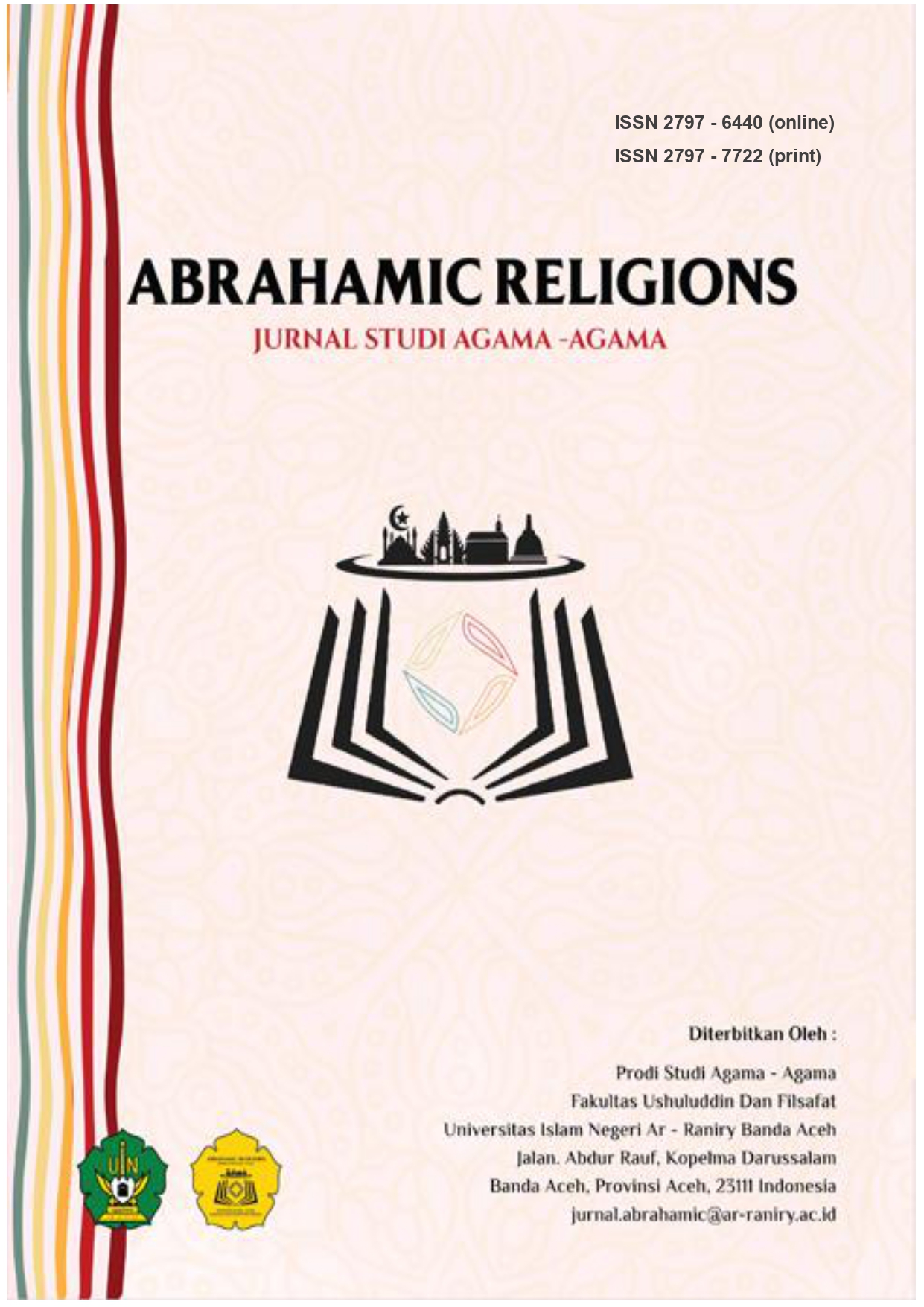TOLERANSI BERAGAMA PERSPEKTIF ISLAM DAN KONG HU CU
DOI:
https://doi.org/10.22373/arj.v1i1.9442Keywords:
Toleransi Beragama, Islam, Kong Hu CuAbstract
Islam is a universal religion that regulates all aspects of life, including teachings about religious harmony. Normatively, the Koran has included verses related to religious pluralism, multiculturalism and tolerance of religious life. Historically the Medina pajamas are historical witnesses that the Prophet laid the foundation and became an example in living a life of different religions and cultures. For Muslims in Indonesia the elimination of seven words in the Jakarta pajamas is a tangible form of inter-religious harmony shown by Muslims. Likewise with the Confucian religion, there are teachings that can lead its adherents to live in harmony with other religions, among the teachings or five noble characteristics of Wu Chang, which are seen as the concept of teachings that can create a harmonious life. The two religions generally maintain harmony with each other, but in particular there are often misunderstandings such as reality shows that there are not a few actions that deviate from the values of tolerance. The method in this discussion uses a library research (library research), with a qualitative approach. The results of this discussion illustrate that Islam and Confucianism positively support the existence of tolerance between religious communities and the government. Furthermore, religious tolerance has limits that must be maintained and respected, for example in the form of the social interests of the two teachings, while regarding the creed, both are not allowed to tolerate. The similarity of tolerance according to both is the harmony of life between religious communities, which is something that is mentioned in the Al-Quran and the book of Lun Yu. Like mutual respect, please help and be fair to every people. Meanwhile, what distinguishes religious tolerance is that Islam does not allow marriage to a non-Muslim, while Confucianism allows marriage to people of different religionsReferences
Ali, Mursyd. (2011). Dinamika Kerukunan Hidup Beragama Menurut Perspektif Agama-Agama. Jakarta:Peningkatan Kerukunan Hidup Beragama.
al-Munawar, Said Agil Husain. (2003). Fikih Hubungan Antar Agama. Jakarta: Ciputat Press.
Charirs, Anton Baker dan Ahmad. (1990). Metode Penelitian Filsafat. Jakarta: Kanisius.
Et all, Zakiah Darajat. (1982). Perbandingan Agama. Jakarta: Bulan Bintang.
Ghazali, M. Bahri. (1994). Studi Agama-Agama Dunia. Jakarta: Pedoman Ilmu Jaya.
Harahap, Syahrin. (2011). Teologi Kerukunan. Jakarta: Prenada.
Ing, Tjhie Tjay. (1985). Pokok-Pokok Keimanan Konfusiani. Jakarta: Matakin.
Joesoef. (t.t). Agama-Agama besar di Dunia. Jakarta: Press.
M, Hidayat Z. (1978). Masyarakat dan Kebudayaan Cina Indonesia. Bandung: Tarsita.
Mulyono, Bashori. (2010). Ilmu Perbandingan Agama. Indramayu: Pustaka Syid Sabiq.
Shihab, M. Quraish. (2002). Tafsir Al-Misbah Vol 4. Jakarta: Lentara Hati.
Tebba, Sudirman. (2001). Islam Pasca Orde Baru. Yogyakarta: Tiara Wacana Yogya.
Udang-Udang Dasar, Pedoman Penghayatan dan Pengalaman Pancasila, Ketetapan MPR N o. II/MPR. 1978, Seketariat Negara RI.
Sumber: ww.republika.co.id/berita/nasional/hukum/14/11/24/nfjb11
Downloads
Published
Issue
Section
License
Authors who publish in this Journal agree to the following terms:
- Authors retain copyright and grant the journal right of first publication with the work simultaneously licensed under Attribution-ShareAlike 4.0 International (CC BY-SA 4.0) allows others to share the work with an acknowledgment of the work's authorship and initial publication in this journal.
- Authors are able to enter into separate, additional contractual arrangements for the non-exclusive distribution of the journal's published version of the work (e.g., post it to an institutional repository or publish it in a book), with an acknowledgment of its initial publication in this journal.
- Authors are permitted and encouraged to post their work online (e.g., in institutional repositories or on their website) prior to and during the submission process, as it can lead to productive exchanges, as well as earlier and greater citation of published work. (See The Effect of Open Acces)












